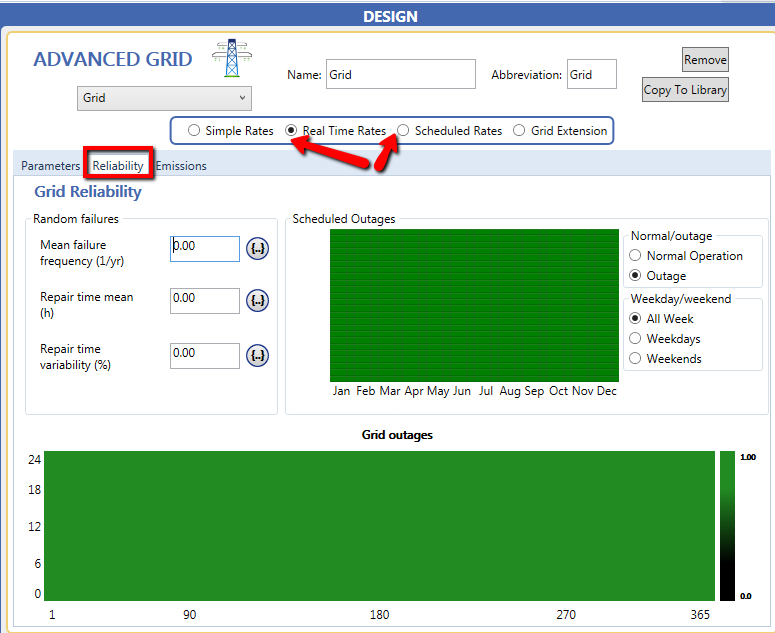One of the most common user requests that we have received over the years at HOMER Energy has been the ability to have the grid be unreliable. HOMER was first modified to allow grid-connected systems in 2003, and the grid was treated as basically an infinite energy source. You could play with costs, and over the years the complexity with which HOMER could manage the grid increased.
But the singlemost requested grid enhancement was not made – until now. On April 28, 2015, HOMER Energy released HOMER Pro 3.2, which gives users very strong control over modeling grid outages. Outages can be scheduled, random (based on 3 user-controlled variables, and of course you can do sensitivity analyses on the variables), or a combination of both.
The release of HOMER Pro 3.2 comes on the heels of the release of the Load Defection Report (The Economics of Load Defection: How grid-connected solar-plus-battery systems will compete with traditional electric service, why it matters, and possible paths forward, which can be downloaded here from the Rocky Mountain Institute Website). The interest in grid-connected microgrids for reliability has taken a strong hold in the US market, where a series of storms in the northeast has demonstrated some of the vulnerability of our grid. But much of the world has always lived with this vulnerability. Where there is a grid, anyone who truly needs to count on electricity has their own generator.
To access the grid reliability parameters in HOMER Pro 3.2, you need to have the Advanced Grid Module enabled, and you need to select either Real Time or Scheduled Rates (although you can still use simple rates – this selection makes the “Reliability” tab appear:


Anonymous – Have you taken a HOMER training yet? These are very good questions but a bit hard to answer without understanding more. Please put in a support ticket, ask in our user site, or take a training. We are happy to help you.
can we control the charge and discharge time of the battery???? also when HOMER uses the battery!!!! is it when the cost of the electricity of the grid higher than the saved one OR randomly operation is controlling the system????? this is confuse me all the time was running HOMER.